Browse in the Library:
| Artist or Composer / Score name | Cover | List of Contents |
|---|---|---|
| Bach J.S. Cantata 147 arr. for Easy piano solo | Bach-Jesu-Joy-of-Mans-Desiring-Cantata-BWV.147-Piano-Solo | |
| BACH J.S. CANTATA 22 ARR. PIANO SANCTIFY US BY THY GOODNESS arr. by Harried Cohen |
 |
|
| Bach J.S. Cello Suite No. 6 arr. piano solo by Joachim Raff |
 |
|
| Bach J.S. Cello Suite No.1 arr. for piano solo |
 |
|
| Bach J.S. Das Musikalisches Opfer BWV 1070 |
 |
|
| Bach J.S. Fifield Transcription Cantata BWV 147 Jesu, Joy of Man’s Desiring piano solo |
 |
|
| Bach J.S. Harpsichord Concerto A-major arr. 2 pianos | ||
| Bach J.S. J.S.- Das Wohltemperierte Klavier I (Urtext) |
 |
|
| Bach J.S. Marcello – BWV 974 Concert no. 3 | ||
| Bach J.S. My First Book of Bach favorite pieces in easy piano arrangements by D. Dutkanicz |
 |
Bach J.S. My First Book of Bach favorite pieces in easy piano arrangements by D. Dutkanicz |
| Bach J.S. Parodi Siciliano from BWV 1031 Piano solo transcription |
 |
|
| Bach J.S. Prelude XXIV | ||
| Bach J.S. Ricercar 6 BWV 1079 from “The Musical Offering | ||
| Bach J.S. Sarabande for cello | ||
| Bach J.S. Siciliano from BWV 1031 Piano solo transcription by Eugen D’Albert |
 |
|
| Bach J.S. Ten Choral Preludes KiV B 27 | ||
| BACH J.S. The Art Of Fugue Bach Fugues For Keyboard, 1715 1750 |
 |
|
| BACH J.S. The little music book of Anna Magdalena (20 easy pieces) |
 |
|
| Bach J.S. Toccata & Fugue Dminor for Piano |
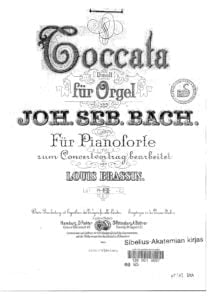 |
|
| Bach J.S. Two Transcriptions Of St. Matthew Passion For Piano Solo |
 |
|
| Bach J.S. Two-Voice Inventions |
 |
|
| Bach J.S.-Busoni BVB36 Prelude Fugue and Allegro BWV998 | ||
| Bach J.S.-Busoni BWV 933-938 | ||
| Bach J.S.-Busoni Prelude in C minor BWV 999 | ||
| Bach J.S.-BWV 1055 4 hands | ||
| Bach J.S.-Choral-BWV-639-Transcr-Busoni | ||
| Bach J.S.-Lipatti – Two Transcriptions of Bach J.S.’s Cantatas 208 | Bach-Lipatti – Two Transcriptions of Bach’s Cantatas 208 | |
| Bach J.S.-Petri – Cantata 208 “Sheep May Safely Graze” Piano solo arr. | Bach-Petri – Cantata 208 Sheep May Safely Graze | |
| Bach J.S.-Siloti- Andante from Sonata for Solo Violin BWV 1003 | ||
| Bach JS “Sheep May Safely Graze” from Cantata 208 (easy piano) |
 |
|
| Bach Liszt Prelude & Fugue In A Minor, Bwv 543 |
 |
|
| BACH Master Musicians Series by Malcom Boyd (eBook) Biography |
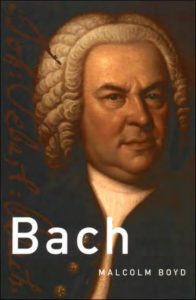 |
|
| Bach Prelude Iv Bwv 849 Wtc I (Musescore File).mscz | ||
| Bach The Goldberg Variations Cambridge Music Handbooks (eBook) |
 |
|
| Bach The Goldberg Variations Cambridge Un. Press (Book) |
 |
|
| Bach The New Bach Reader A Life Of Johann Sebastian Bach In Letters And Documents (Arthur Mendel Hans T. David Christoph Wolff) Book |
 |
|
| Bach Toccata And Fugue In D Minor (Piano Solo) (Musescore File).mscz | ||
| Bach Toccata and Fugue in D Minor BWV 565 (Piano solo arr.) |
 |
|
| Bach Toccata And Fugue In D Minor Bwv 565 (Piano Solo Arr.) (Musescore File).mscz | ||
| Bach Two Part Inventions (No. 1 Bwv 772) (Musescore File).mscz | ||
| Bach-Bauer Die Seele Ruht..Cantata 127 for piano solo | ||
| Bach-Busoni – Chaconne D minor arr. piano solo |
 |
|
| Bach-Busoni Ich Ruf’ Zu Dir Herr Bwv 639 Piano Solo Arr. (Musescore File).mscz | ||
| Bach-Gouin – Harpsichord Concerto in F Minor (Arioso) BWV1056 piano |
 |
|
| Bach-Rummel Ertodt-Uns BWV22 |
 |
|
| Bach-Siloti – Praeludium In B Minor BWV 855a | Bach-Siloti – Praeludium In B Minor Bwv 855a | |
| Bach-Siloti – Praeludium In B Minor Bwv 855a (Musescore File).mscz | ||
| Bach-Siloti Transcription of Bach’s Air from Suite for String Orchestra No.3, BWV 1068 | ||
| Bach-Stradal Trio Sonata No 4 in E minor BWV 528 |
 |
|
| Bach, Johann Sebastian – Complete Lute Music (transcribed for Guitar) |
 |
|
| Bach, J. S. Concert In D Minor Bwv 1043 For Two Violins And Piano Musescore File.mscz | ||
| Bach, J.S. Jesus Bleibet Meine Freude Easy Guitar Arr. Jesu, Joy Of Man’s Desiring Cantata Nr. 147 | Bach, J.S. – – Jesu Bleibet Meine Freude Guitar arr. | |
| Bach, J.S. Jesus Bleibet Meine Freude Guitar Arr. Jesu, Joy Of Man’s Desiring Cantata Nr. 147 | Bach, J.S. Jesus Bleibet Meine Freude Guitar Arr. Jesu, Joy Of Man’s Desiring Cantata Nr. 147 | |
| Bach, J.S. Orchestral Suite No. 1 In C Major Bwv 1066 Passepied (Easy Piano Solo) |
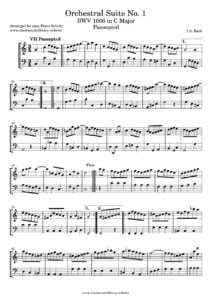 |
|
| Bach, J.S. Arioso For Piano Solo BWV 156 |
 |
|
| Bach, J.S. For Electric Guitar [Guitar SongBook] |
 |
Bach, J.S. For Electric Guitar |
| Bach, J.S. Myra Hess Chorale from Cantata 147 Jesu Joy Of Man’s desiring Hess Myra piano solo Arrangement |
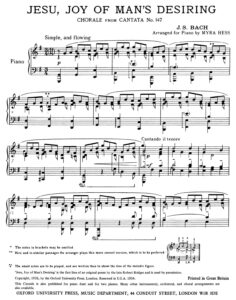 |
|
| Bach, J.S. – Jesus bleibet meine Freude Guitar arr. Jesu, Joy of Man’s Desiring Cantata Nr. 147.mscz | ||
| Bach, J.S. – Jesus_bleibet_meine_Freude_Cantata_Bwv147_10_Choral SATB with Piano by Johann_Sebastian_Bach.mscz | ||
| Bach, J.S. – Toccata and Fugue in D Minor (Piano Solo) |
 |
|
| Bach, J.S. Arioso (Guitar) from Cantata BWV 156 Guitar arr. by Per Orlov Kindgren |
 |
|
| Bach, J.S. Awake, tu us the Voice is calling – Wachet Auf, ruft uns die Stimme Piano solo arr. (Borwick) |
 |
|
| Bach, J.S. Chorale from Cantata 147 Jesu Joy Of Man’s desiring Easy piano solo Arr. |
 |
|
| Bach, J.S. Dinu Lipatti Pastorale in F ( Piano solo transcription) |
 |
|
| Bach, Johann Sebastian (bio book LUX-Lesebogen) (Deutsch-German) Biography |
 |
|
| Bach, JS Partitas Partita 1 |
 |
|
| Bach’s Well-tempered Clavier The 48 Preludes and Fugues (Book ) David Ledbetter |
 |
|
| Bachianas Brasileiras No. 5 (Heitor Villa-Lobos) | ||
| Bachianas Brasileiras No. 5 (Heitor Villa-Lobos) 2 pianos | ||
| Back To The Future |
 |
Back To The Future |
| Backstreet Boys – All I Have To Give | ||
| Backstreet Boys – As Long As You Love Me | ||
| Backstreet Boys – Drowning | ||
| Backstreet Boys – How Did I Fall In Love With You | ||
| Backstreet Boys – I Need You Tonight | ||
| Backstreet Boys – I Want It That Way | ||
| Backstreet Boys – Incomplete | ||
| Backstreet Boys – Quit Playing Games With My Heart | ||
| Backstreet Boys – Show Me The Meaning Of Being Lonely | ||
| Backstreet Boys As Long As You Love Me |
 |
|
| Backstreet Boys Backstreets Back |
 |
|
| Backstreet Boys Black Blue |
 |
|
| Backstreet Boys Drowning |
 |
|
| Backstreet Boys Everybody |
 |
|
| Backstreet Boys I Want It That Way |
 |
|
| Backstreet Boys Shape Of My Heart |
 |
|
| Baden Powell Manha De Carnaval Guitar Tablature Tabs |
 |
|
| Baden Powell – So Por Amor (Guitar arr. sheet music with TABs) | Baden Powell – So Por Amor (Guitar arr. sheet music with TABs) | |
| Baden Powell – Samba Do Aviao (Jobim) Guitar arr |
 |
|
| Baden Powell – Samba Em Preludio Guitar TAB |
 |
|
| Baden Powell – Serenata Do Adeus Guitar TABs |
 |
|
| Baden Powell Complete Brazil On Guitar transcriptions with Tablature |
 |
Baden Powell complete sheet music |
| Baden Powell Contemporary solo guitar (Book In Japanese) |
 |
|
| Baden Powell Prelude In A Minor (guitar) |
 |
|
| Baden Powell Retrato Brasileiro Choro Lento (Guitar) |
 |
|
| Baden Powell Songbook – Volume 1 (Guitar) |
 |
Baden Powell 1 |
| Baden Powell Songbook – Volume 2 (Guitar) |
 |
Baden Powell 2 |
| Baden Powell Songbook Volume 3 (Guitar) |
 |
Baden Powell songbook 3 |
| Badfinger – No Matter What |
 |
|
| Baghdarsaryan, Eduard 24 Preludes For Piano |
 |
|
| Baker’s Biographical Dictionary Of Popular Musicians 1990 Complete Vol 1 A L and Vol 2 M Z |
 |
|
| Balada Para Alessandro (Raul Di Blasio) | ||
| Balázs Havasidom Freedom Piano Solo Sheet Music |
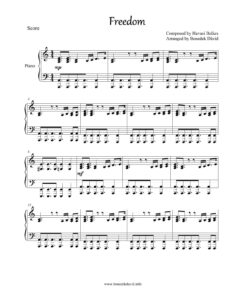 |
|
| Ballad No Name (William Joseph) | ||
| Ballade No. 1 In G Minor (Musescore File).mscz | ||
| Ballads Big Book Of Ballads 2nd Edition Piano Vocal Guitar |
 |
Ballads Big Book Of Ballads 2nd Edition Piano Vocal Guitar |
| Ballads For Classical Guitar |
 |
Ballads For Classical Guitar |
| Ballads Really easy piano (24 great songs) |
 |
Ballads Really easy piano (24 great songs) |
| Ballads The Big Book Of Ballads 3rd Edition Piano Vocal Guitar |
 |
Ballads The Big Book Of Ballads 3rd Edition Piano Vocal Guitar |
| Bambina (Lara Fabian) | ||
| Banana Boat Day-O – Guitarr Arr. With Tabs (Traditional Jamaican Folk Song (Sheet Music) |
 |
|
| Banana Boat Day-O – Guitarr Arr. With Tabs (Traditional Jamaican Folk Song (Sheet Music)) (Musescore File).mscz | ||
| Banana phone (Raffi) | ||
| Bangles – Eternal Flame | ||
| Bar Piano Susi’s – Band 1 – Swing Evergreens and Pop Classics by Susi Weiss |
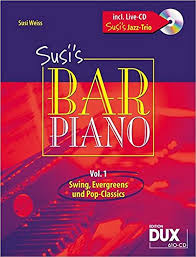 |
Bar Piano Susi’s – Band 1 – Swing Evergreens and Pop Classics by Susi Weiss |
| Bar Piano Susi’s – Band 2 – Swing Evergreens and Pop Classics by Susi Weiss |
 |
Bar Piano Susi’s – Band 2 – Swing Evergreens and Pop Classics by Susi Weiss |
| Bar Piano Susi’s – Band 3 – Swing Evergreens and Pop Classics by Susi Weiss |
 |
Bar Piano Susi’s – Band 3 – Swing Evergreens and Pop Classics by Susi Weiss |
| Bar Piano Susi’s – Band 4 – Swing Evergreens and Pop Classics by Susi Weiss |
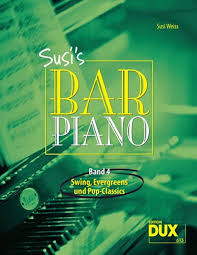 |
Bar Piano Susi’s – Band 4 – Swing Evergreens and Pop Classics by Susi Weiss |
| Bar Piano Susi’s Merry Christmas by Susi Weiss |
 |
Bar Piano Susi’s Merry Christmas by Susi Weiss |
| Bar Piano, Susi’s – Band 5 – Swing, Evergreens and Pop Classics by Susi Weiss |
 |
Bar Piano, Susi’s – Band 5 – Swing, Evergreens and Pop Classics |
Satin Doll (Jazz Play Along with sheet music) by Duke Ellington (from Sophisticated Ladies)


Satin Doll – Jazz Standard
In early 1953 Duke Ellington left Columbia Records and signed a major contract with Capitol Records. On April 6, he held the first recording session, which included “Satin Doll,” “Without A Song,” and “Cocktails For Two.” It appears that Ellington originally wrote the melody for ‘Satin Doll’ and Billy Strayhorn wrote the lyrics, but these were not considered commercially viable. Five years later Johnny Mercer, co-founder of Capitol Records, wrote a new letter, which is what is known today and is unanimously praised by critics.
It is unknown to whom the name ‘Satin Doll’ refers. Some say that it is Strayhorn’s mother, while others, such as Mercer Ellington, suspect that the mysterious woman is Edna, Duke’s wife, who, for her part, always claimed that she was the recipient of the song.
In 1969, pianist Earl Hines placed an ad in Downbeat magazine wishing Duke Ellington a happy seventieth birthday, but in small print he added: remember I wrote ‘Satin Doll’. Hines never elaborated on his surprising claim, but he recorded the song several times, and included it on an Ellington tribute album.
Billy Strayhorn is the author of “Chelsea Bridge” (1941), “Rain Check” (1942), “A Flower Is a Lovesome Thing” (1944), “Lotus Blossom” (1947), and “Lush Life” (1949). In collaboration with Ellington he composed ‘Day Dream’ (1941), ‘Something to Live For’ (1939) and ‘Satin Doll’ (1953), among many other songs.
Jazz. Featured Performances
Instrumental
| ARTISTS | DATE | PERSONNEL |
| Duke Ellington Famous Orchestra | 1953.04.06 | Duke Ellington (p, dir), Cat Anderson, Willie Cook, Ray Nance, Clark Terry (tp), Quentin Jackson, Juan Tizol, Britt Woodman (tb), Russell Procope (as, cl), Rick Henderson (as), Paul Gonsalves (ts), Jimmy Hamilton (cl, ts), Harry Carney (bars, cl), Wendell Marshall (b), Butch Ballard (d) |
| Victor Feldman Trio | 1958.01.22 | Victor Feldman (vib, p), Scott LaFaro (b), Stan Levey (d) |
| Johnny Hodges & All The Duke’s Men | 1958.04.05 | Johnny Hodges (as), Billy Strayhorn (p), Jimmy Woode (b), Sam Woodyard (d) |
| Jo Jones Trio | 1958.04.30 | Ray Bryant (p), Tommy Bryant (b), Jo Jones (d) |
| Red Garland Trio | 1959.10.02 | Red Garland (p), Doug Watkins (b), Charles “Specs” Wright (d) |
| Wes Montgomery Trio | 1959.10.05 | Wes Montgomery (g), Mel Rhyne (org), Paul Parker (d) |
| Coleman Hawkins Sextet | 1962.08.15 | Coleman Hawkins (ts), Roy Eldridge (tp), Johnny Hodges (as), Tommy Flanagan (p), Major Holley (b), Eddie Locke (d) |
| McCoy Tyner Trio | 1963.03.04 | McCoy Tyner (p), Steve Davis (b), Lex Humphries (d) |
| Jimmy Smith Trio | 1965.06.15 | Jimmy Smith (org), Kenny Burrell (g), Grady Tate (d) |
| Duke Ellington | 1972.04.10 | Duke Ellington (p), Joe Benjamin (b), Rufus Jones (d) |
| Earl Hines | 1973.03.27 | Earl Hines (p) |
| Joe Pass Trio | 1974.06.21 | Joe Pass (g), Ray Brown (b), Bobby Durham (d) |
| Oscar Peterson & Clark Terry | 1975.05.18 | Oscar Peterson (p), Clark Terry (tp, tpa) |
| Milt Hinton Trio | 1984.09.03 | Milt Hinton (b), Jane Jarvis (p), Louis Bellson (d) |
| Oscar Peterson Quartet | 1998.07.22 | Oscar Peterson (p), Ulf Wakenius (g), Niels-Henning Ørsted Pedersen (b), Martin Drew (d) |
| Jessica Williams | 2000.09.?? | Jessica Williams (p) |
Vocals
| ARTISTS | DATE | PERSONNEL |
| Ella Fitzgerald | 1963.07.15 | Ella Fitzgerald (voc), Al Aarons, Joe Newman, Don Rader, Fip Ricard (tp), Henry Coker, Urbie Green, Grover Mitchell, Benny Powell (tb), Eric Dixon, Frank Foster, Frank Wess (as, ts, fl), Marshall Royal (as, cl), Charlie Fowlkes (bars), Count Basie (p), Freddie Green (g), Buddy Catlett (b), Sonny Payne (d), Quincy Jones (dir) |
| Nancy Wilson | 1963.10.08 | Nancy Wilson (voc), Al Porcino, Carmell Jones (tp), Harold Land (ts), Wild Bill Davis (org), Joe Pass (g), Jimmy Bond (b), Kenny Dennis (d) |
| Kenny Burrell Orchestra | 1975.02.?? | Kenny Burrell (g), Jerome Richardson (ts), Jimmy Smith (org), Jimmy Jones (p), Stanley Gilbert (b), Jimmie Smith (d), Ernie Andrews (voc) |
DUKE ELLINGTON – Half a century of jazz
The musical life of Edward Kennedy Ellington is quite a chapter in the history of jazz. They are fifty years of constant activity that support him, not only as one of the greatest musicians in the history of his country, but as a round creator, since he served as a composer, orchestra leader, arranger, author and soloist.
Edward Kennedy was born on April 29, 1899, in Washington as the son of James Edward Ellington and Daisy Kennedy. James worked as a butler for a doctor’s family, and Daisy was the daughter of a well-to-do family. Edward’s personality took shape between gentle expressions, etiquette and formality.
In his house there were not one, but two pianos and thanks to them, he learned music from adolescence, a time when Edward Kennedy named himself duke without anyone being able to tell him otherwise.

His professional career took shape towards commercial design, but in 1918 the National Association for the Advancement of Colored People (NAACP) awarded him a scholarship to study art in New York. In that same year he married Edna Thompson and they had a son, Mercer Ellington, a new responsibility that made him rethink the future of his career.
After the end of the fellowship, Duke Ellington briefly returned to Washington, before moving permanently to New York in 1923 with his musician friends Otto Hardwick and Sonny Greer. All three were already well-known at the time for playing dance music in the newly opened bars of Harlem, where Ellington was able to recognize his gifts as a leader of small orchestras. The trio made Club Kentucky a go-to place for fun music.
Duke Ellington’s compositions and arrangements then had an exotic and burning essence. An example of this is the song “East Saint Louis Toodle-Oo”, which also includes excerpts inspired by Chopin’s “The Funeral March”.
In 1927, Ellington and his band were selected to play at the Cotton Club in Harlem, which was nothing more than Carnegie Hall for those who couldn’t get to it, according to Ted Gioia’s The History of Jazz.
Without knowing it at the time, the dance shops in that New York neighborhood, like the Savoy and the Cotton Club itself, would be schools and tickets for the future of music in the United States, considering that they also did not exclude white audiences. It was also as if the economic problems that the North American country was going through could not enter these clubs that were open six days a week.
‘Duke’s supremacy during the Cotton Club years not only enabled it to weather the onset of the Depression, but even to thrive at a time when most bandmasters were downsizing,’ writes Gioia.
The crisis of the thirties did not touch Duke, who had the financial capacity to sign the trombonists Juan Tizol and Lawrence Brown, other great names in the history of jazz.
In that same year, Duke appeared in his first Hollywood movie, Check and Double Check, and by 1931 he would be invited to meet President Hoover at the White House, an act unheard of for a black musician at the time.
It’s 2014 and Lady Gaga, with her hair dyed blue, repeats the scatting –jazz vocal improvisation- of “It don’t mean a thing (if it ain’t got that swing)”, one of the most popular songs of the gender. In 1932, when this song composed by Duke Ellington with lyrics by Irving Mills was recorded, experts probably already imagined it as one of the best jazz works of the era and also of its authors. The piece survived the turn of the century and several more generations, performed by the most popular singers of the day.
The Depression era meant the opposite for Duke Ellington, for by 1933 he had already recorded other hits from his career, songs that would enter the American staple repertoire. “Mood Indigo”, “In a Sentimental Mood”, “Sophisticated Lady” and “Solitude” would be replicated at that time due to the success they had among people who wanted to dance, but also among jazz players, who turned these pieces into standards of the gender.
In 1934 the pianist composed ‘Symphony in black’, a piece considered exalted due to its complexity. The nine-minute suite tested Duke’s ability as a bandleader, composer and musical genius beyond the formula to make everyone dance or go into a melancholic state. “Symphony in black”, however, summed up Duke Ellington’s ability to make the audience go through those two atmospheres in less than ten minutes.
That same year everything was about to change for American culture, thanks in part to the work that Duke and his contemporaries had already done. The dry law in the North American country had ended and the music was beginning to reach the masses. Swing and booze were a glitzy mix for the post-Depression years.
Soon, society understood that neither jazz nor alcohol posed a threat to its status quo. On the contrary, white musicians such as Benny Goodman or Glenn Miller also took up swing, inspired by Ella Fitzgerald, Fletcher Henderson and Duke Ellington and thus began the best years of this musical style.
In 1937 Ellington recorded another piece of music that musically surpassed anything he had done before: ‘Caravan’. Considered one of the epitomes of jazz. The year 2014 brought her back with a bang after her mention in Damien Chazelle’s film Whiplash.
“Caravan” was composed by trombonist Juan Tizol, who sold the rights to his song for $25 to Ellington without knowing its true value. Once arranged and recorded with a big band led by Ellington himself, “Caravan” conquered the charts. This recording featured Cootie Williams on trumpet, Tizol on trombone, Barney Bigard on clarinet, Harry Carney on saxophone, Billy Taylor on double bass, and Sonny Greer on drums, members who would follow Ellington for decades to come.
The scope of this piece is difficult to measure because of the potential it offers to improvise, add solos and evolve, as it did through Wes Montgomery in 1964 and Wynton Marsalis in 1986.
And although Duke was an important player in the swing era, he preferred not to simplify the melodies. According to the National Museum of American History, the pianist was not particularly interested in creating a good rhythm for dancing –although he did it-, but rather in exploring more of his musical imagery.
“When swing music and dance became a national obsession in the late 1930s, Ellington stood above them all and went his own way,” reads the Smithsonian Institute and Smithsonian Jazz site.
Duke and his band closed the golden decade of swing by touring Europe.
In 1938 his orchestra was joined by another relevant element for the next few years: the young arranger and composer Billy Strayhorn, who did not take long to give the orchestra a hit: “Take the ‘A’ Train”, a piece that shortly before had thrown away as it is considered little new.
Billy found inspiration for the lyrics of this piece in the new subway line in New York that made people confused to get to Harlem.
“You must take the A Train
To go to Sugar Hill, way up in Harlem”
The 1941 song would be recognized in 2000 as one of the 100 best of the 20th century, according to NPR.
The train that leads to Carnegie
Already far from commercial swing, Duke Ellington ventured to continue with his complex compositions. ‘Black, Brown, Beige,’ a three-movement suite or ‘a parallel to American Negro history,’ as Duke presented it at Carnegie Hall, was a straightforward statement about the racism African Americans faced, but also , many black musicians at the time.
Despite the relevance of his complaint, he was harshly criticized for his performance at one of the most important jazz events in the world, as Claudia Roth wrote for The New Yorker. Such an incident would be far from the end of his career. In any case, it heralded a new era, for from 1943 to 1947, Duke Ellington returned to Carnegie Hall with a different repertoire and without provocation.
In the following years, the big bands -although they managed to support themselves financially through royalties-, ceased to be so profitable, since swing began to lose its touch. Meanwhile, Ellington was still writing long movements like ‘Do Nothing till You Hear from Me’ from 1943 and ‘The Perfume Suite’ from 1945.
Before the crisis, between 1947 and 1955, some important members of the band went to others. Among the few important creations of these years were ‘Harlem’, fourteen minutes and ‘Satin Doll’, possibly his last success.
What was left for Ellington was nothing more than reinterpretation, which was not necessarily a sign of failure. He proved this in 1956 when he performed at the Newport Jazz Festival, where he performed the original 1937 Diminuendo and Crescendo in Blue. This performance is considered one of the 50 greatest moments in jazz.
The Pulitzer and other merits
With the collaboration of saxophonist Paul Gonsalves at the Newport concert, Duke’s career was revived. Critics once again recognized him as the respected musician and bandleader he always was. Shortly thereafter he was named an honorary ambassador for jazz and began touring all continents.
In 1959 the National Association for the Advancement of Colored People, with whom he collaborated throughout his career, awarded Ellington its highest award, previously awarded to Martin Luther King and other civil rights fighters. However, the African American community questioned the decision asking what Ellington had done to deserve it, arguing that during his career the pianist had played for a segregated public in the southern region of the United States, to which Duke Ellington simply responded with a : ‘everybody does’. And he was right.
Claudia Roth collected Ellington’s most extensive response to this question. “They haven’t been listening to our music. (…) We have been talking for a long time about what it is to be black in this country, ”she said.
From then on he never left his activism aside and made it more and more evident. He recorded a new version of ‘Black, Brown, Beige’ called ‘Come Sunday’ with Mahalia Jackson on vocals and protested with the students against the discrimination that black youth suffered in establishments.
Something similar happened in 1965 when the jury for the Pulitzer Prize for Music nominated him, but in the end he decided not to award the distinction to anyone. They argued that Duke Ellington did not meet the terms of what the award represented.
The pianist told music critic Nat Hentoff that he was very frustrated by this decision, but that he was not surprised. “(…) most Americans still take it for granted that only European-based music – classical music – is the one that should be respected. In this country, jazz has always been the kind of man you wouldn’t want your daughter to associate with.’
During his last assets, Duke Ellington continued to compose and arrange music. In 1967 he wrote an album called ‘And His Mother Called Him Bill’ with a dedication to his colleague and great friend Billy Strayhorn, after his death that same year.
On May 24, 1974, the Duke of Jazz, a noble title that did him justice, died of pneumonia aggravated by lung cancer that he suffered from. Thousands of people gathered to see him off.
The musical Pulitzer Prize would be awarded to him posthumously in celebration of his 100th birthday, in 1999, in recognition of his musical contribution.
Browse in the Library:
| Artist or Composer / Score name | Cover | List of Contents |
|---|---|---|
| (500) Days Of Summer Piano Theme ( Mychael Danna, Rob Simonsen) | (500) Days Of Summer Piano Theme ( Mychael Danna, Rob Simonsen) | |
| 10,000 Maniacs Because The Night Piano Solo sheet music |
 |
|
| 100 Golden Standards The World’s Best Piano Arrangements by the greatest pianists of the Century |
 |
The World’s Best Piano Arrangements |
| 100 Great Keyboard Intros Songbook |
 |
100 Great Keyboard Intros Songbook |
| 100 Greatest Film Scores (Book) by Matt Lawson & Laurence E. MacDonald |
 |
|
| 100 greatest POP songs |
 |
100 greats pop songs |
| 100 Greatest Songs of Rock & Roll, Selections From Piano Vocal Guitar Sheet Music |
 |
100 Greatest Songs of Rock & Roll, Selections From Piano Vocal Guitar Sheet Music |
| 100 Hits Simply The Best – Guitar (Die besten Songs aus Pop Rock) German |
 |
100 Hits Simply The Best (Die besten Songs aus Pop |
| 100 Jazz & Blues Greats Book |
 |
100 Jazz & Blues Greats |
| 100 Jazz Solos & Etudes by Jacob Wise |
 |
100 Jazz solos |
| 100 Light Classics For Piano Solo |
 |
100 Light Classics For Piano Solo |
| 100 Most Beautiful Christmas Songs Easy Piano Vocal |
 |
100 Most Beautiful Christmas Songs Easy Piano Vocal |
| 100 Most Beautiful Christmas Songs Piano Vocal Guitar |
 |
100 Most Beautiful Christmas Songs Piano Vocal Guitar |
| 100 Must-Know Jazz Tunes with MP3 audio tracks to Play Along |
 |
100 Must-Know Jazz Tune – C version |
| 100 of the Best Movie Songs Ever! Piano Vocal Guitar |
 |
100 best movie songs 1&100 best movie songs 2 |
| 100 Of The Best Songs Ever For The Keyboard by Daniel Scott |
 |
100 Of The Best Songs Ever For The Keyboard |
| 100 Piano Solos (100 popular standards of today arr. by Frank Booth) with guitar chords |
 |
100 piano solos 1 |
| 100 Pop Hits Of The 90’s by Dan Coates |
 |
100 Pop Hits Of The 90’s by Dan Coates |
| 100 Rock N Roll Standards Piano Vocal Guitar chords |
 |
100 Rock N Roll Standards Piano Vocal Guitar chords contents |
| 100 Songs For Kids – Easy Guitar Lyrics with Tablature |
 |
100 Songs For Kids – Easy Guitar Lyrics |
| 100 Tunes Every Musician Should Know Professional Chord Changes And Substitutions By Dick Hyman |
 |
100 Tunes Every Musician Should Know Professional Chord Changes And Substitutions By Dick Hyman |
| 100 Ultimate Blues Riffs For Piano Keyboards |
 |
100 ultimate riffs jazz piano |
| 100 Women Of Pop And Rock 100 songs by 100 artists |
 |
100 Women Of Pop And Rock 100 songs by 100 artists Piano Vocal Guitaral Leonard |
| 100 Years Of Popular Music 1980s Part Two Piano Vocal Guitar Chords |
 |
100 Years Of Popular Music 1980s Part Two Piano Vocal Guitar Chords |
| 1000 Examples of Musical Dictation (Ladukhin, Nikolay) | 1000 Examples of Musical Dictation | |
| 1000 Words – Final Fantasy X-2.mscz | ||
| 1001 Blues Licks by Toby Wine – Piano |
 |
1001 Blues Licks by Toby Wine – Piano |
| 1001 Jazz Licks A Complete Jazz Vocabulary For The Improvising Musician (Jack Shneidman) |
 |
1001 Jazz Licks A Complete Jazz Vocabulary For The Improvising Musician (Jack Shneidman) |
| 101 Cançoes Que Tocaram O Brasil Nelson Motta (Book) (Brazilian Portuguese) |
 |
|
| 101 Frank Sinatra Hits For Buskers |
 |
101 Frank Sinatra Hits For Buskers |
| 101 Mississippi Delta Blues Fingerpicking Licks Guitar and TAB by Larry McCabe |
 |
Larry McCabe – 101 Mississippi Delta Blues Fingerpicking Licks |
| 101 Must-Know Blues Licks (Guitar Educational) (Wolf Marshall) PDF + MP3 audio tracks Play Along with Tablature |
 |
101 Must-Know Blues Licks (Guitar Educational) (Wolf Marshall) |
| 1015 Songs – The Original Musicians’s (Musicals) |
 |
1015 Songs – The Original, Musicians’s (Musicals) |
| 106 Songs Everybody Plays |
 |
106 Songs Everybody Plays |
| 11 Short Classical Piano Pieces |
 |
11 Short Classical Piano Pieces |
| 116 Arrangements Of Baroque, Classical & Ballet Pieces For Piano Solo |
 |
116 Arrangements Of Baroque, Classical & Ballet Pieces For Piano Solo |
| 129 Easy Pieces For Piano Solo, also for beginners |
 |
129 easy pieces for piano solo |
| 12th Street RAG – Liberace Collection Book of 5 compositions |
 |
 |
| 12th Street Rag by Euday Bowman (Piano Solo sheet music, Noten, partition, partitura, spartito).mscz | ||
| 150 Best Songs For Acoustic Guitar |
 |
|
| 150 More Of The Most Beautiful Songs Ever (Songbook) Piano Vocal Guitar |
 |
150 More Of The Most Beautiful Songs Ever (Songbook) Piano Vocal Guitar |
| 150 Of The Best Jazz Standards Ever |
 |
150 Of The Best Jazz Standards Ever |
| 150 Of The Most Beautiful Songs Ever 3rd Edition |
 |
150 Of The Most Beautiful Songs Ever 3rd Edit1 and 150 Of The Most Beautiful Songs Ever 3rd Edit2 |
| 16 Pop and Movies Hits Keyboard Piano Book (Mike Emerson) |
 |
16 Pop and Movies Hits Keyboard Piano Book (Mike Emerson) |
| 1600 Pennsylvania Avenue The Musical By Leonard Bernstein And Alan Jay Lerner Vocal Selections |
 |
|
| 17 Moments of Spring – Mgnovenia (Mikael Tariverdiev) | ||
| 1812 Overture Op. 49 Thaikovsky (arr. piano solo) |
 |
|
| 1950s Jazz (Fake Book lead sheet music) |
 |
1950s Jazz (Fake Book lead sheet music) |
| 20 Century Fox Theme Transcription By Deusde Coppen |
 |
|
| 20 Modern BEBOP Licks – by Noah Kellman All Keys with left hands chords |
 |
20 Modern BEBOP Licks – by Noah Kellman All Keys with left hands chords |
| 200 Jazz Standards Tunes (chords progressions for C Instruments) Bob Taylor |
 |
200 Jazz Standards Tunes (chords progressions for C Instruments) Bob Taylor |
| 200 Of The Best Songs From Jazz Of The ’50s | jazz of the 50s | |
| 2014 Top Hits Of 2014 Songbook Piano Vocal Guitar |
 |
2014 Top Hits Of 2014 Songbook Piano Vocal Guitar |
| 2016 Top Hits Of 2016 Songbook Piano Vocal Guitar |
 |
2016 Top Hits Of 2016 Songbook Piano Vocal Guitar |
| 2018 Greatest Pop Movie Hits Songbook For Piano |
 |
2018 Greatest Pop Movie Hits Songbook For Piano |
| 2019 GREATEST POP MOVIE HITS SONGBOOK FOR PIANO PART 2 Piano sheet music (Jim Presley) |
 |
2019 GREATEST POP MOVIE HITS SONGBOOK FOR PIANO PART 2 Piano sheet music (Jim Presley) |
| 2020 Greatest Pop Piano Sheet Music Book Songbooks For Piano |
 |
2020 Greatest Pop Piano Sheet Music Book Songbooks For Piano |
| 20th Century Classics Volume 1 |
 |
20th Century Classics Volume 1 |
| 20th Century Jazz Guitar by Richie Zellon (with Tablature) |
 |
20th Century Jazz Guitar by Richie Zellon |
| 20th Century Masters Of Fingerstyle Guitar by John Stropes |
 |
20th Century Masters Of Fingerstyle Guitar by John Stropes |
| 20th Century Piano Music – Book (1990) David Burge |
 |
20th Century Piano Music Book (1990) David Burge |
| 24 Etudes Op.35 – Fernando Sor (1778 – 1839) (Musescore File).mscz | ||
| 24_Preludes_Op.34 Shostakovich.mscz | ||
| 25 Short Classical Guitar Pieces (with Tablature) |
 |
25 Short Classical Guitar Pieces |
| 262 Classic Piano Rags Various Composers |
 |
262 Classic Piano Rags Various Composers |
| 273 Easy And Intermediate Piano Pieces |
 |
273 Easy And Intermediate Piano Pieces contents |
| 28 Modern Jazz Trumpet Solos Book 2 |
 |
28 Modern Jazz Trumpet Solos Book 2 |
| 3.10 to Yuma (Marco Beltrami) | ||
| 30 Best Rock Guitar Songs Ever (Guitar TABs) |
 |
30 Best Rock Guitar Songs Ever (Guitar TABs) |
| 300 Sacred Songs Melody Lyrics Chords Fake Book Melody Lyrics Chords |
 |
300 Sacred Songs Melody Lyrics Chords Fake Book Melody Lyrics Chords_compressed |
| 36 Christmas Carols Songs |
 |
36 christmas carols songs |
| 38 Special Guitar Anthology Guitar Recorded Vers. with Tablature |
 |
38 special guitar anthology |
| 39 Progressive Solos For Classical Guitar (with Tablature) |
 |
39 Progressive Solos For Classical Guitar |
| 39 Progressive Solos For Classical Guitar Book 2 (with Tablature) |
 |
39 Progressive Solos For Classical Guitar Book 2 sheet music pdf |
| 40 Easy Guitar Pieces (Painted with the Sound) |
 |
|
| 49 Most Popular Jazz Songs |
 |
49 Most Popular Jazz Songs |
| 5 Christmas Songs Sheet Music Trumpet in B & Piano accompaniment (Viktor Dick) | 5 Christmas Songs Sheet Music Trumpet in B & Piano accompaniement (Viktor Dick) | |
| 50 Broadway Shows 50 Broadway Songs |
 |
50 Broadway Shows 50 Broadway Songs |
| 50 Classical Guitar Solos In Tablature (Howard Wallach) with Tablature |
 |
50 Classical Guitar Solos In Tablature (Howard Wallach) |
| 50 Essential Bebop Heads Arranged For Guitar Tablature (best lines Charlie Parker, Dizzy Gillespie, Thelonious Monk and more) |
 |
50 Essential Bebop Heads Arranged For Guitar Tablature (best lines Charlie Parker, Dizzy Gillespie, Thelonious Monk and more) |
| 50 Gershwin Classics Songbook |
 |
50 Gershwin Classics Songbook |
| 50 Jazz Standards Every Jazz Musician Needs To Know with MP3 audio tracks to Play Along |
 |
50 Jazz Standards Every Jazz Musician Needs To Know – C version |
| 50 Most Popular Classical Melodies (Easy Piano) |
 |
50 Most Popular Classical Melodies |
| 50 Of The Most Beautiful Piano Love Songs Solos Ever. |
 |
50 OF THE MOST BEAUTIFUL PIANO LOVE SONGS SOLOS EVER |
| 50 Piano Arrangements Of Hymns And Gospel Songs (Fred Bock’s Best) |
 |
50 Piano Arrangements Of Hymns sheet music |
| 50 Piano Classics – Easy |
 |
50 piano classics |
| 50 Riffs For Blues Guitar – Martin Shellard with MP3 audio to Play Along with Tablature |
 |
50 riffs for blues guitar |
| 500 Piano Intros For The Great Standards – Steinway |
 |
500 piano intros |
| 55 Country Classics (Voice, piano, Guitar) |
 |
55 Country Classics (Voice, piano, Guitar) |
| 557 Jazz Standards (Sheet Music – in C for all instruments) swing to bop (lead sheet) |
 |
Standards (Sheet Music – Piano) |
| 60 Progressive Solos For Classical Guitar By Mark Phillips (with Tablature) |
 |
|
| 67 Fun Songs arranged by Jon Schmidt (Piano) |
 |
|
| 70’s Hits (Easy Piano Solos) – Hans-Gunter Heumann [Piano, Vocal, Chords] |
 |
 |
| 750.000 anni fa.l’Amore (Banco del Mutuo Soccorso) | ||
| 75th Anniversary A Tribute In Music From The 20s Through The 90s Various Artists Warner Bros |
 |
75th Anniversary A Tribute In Music From The 20s Through The 90s Various Artists Warner Bros |
| 78 Quarterly No 1 and 2 (1967) Book magazine |
 |
|
| 8 ½ Theme (Nino Rota) | ||
| 8 Femmes (Krishna Levy) | ||
| 8 Jazz scales you need to know.mscz | ||
| 80 Most Requested LDS Songs (Mormon music) |
 |
80 Most Requested LDS Songs (Mormon music) |
| 88 Piano Classics For Beginners – David Dutkanicz |
 |
88 Piano Classics For Beginners – David Dutkanicz |
| 88 The Giants Of Jazz Piano by Robert L. Foerschuk (Book) foreword by Keith Jarrett |
 |
|
| 9 easy guitar pieces – Sveinn Eythorsson |
 |
|
| 97 Oeuvres pour Guitare de Jean Francois DELCAMP |
 |
97 Oeuvres pour Guitare de Jean Francois DELCAMP |
| 99 Easy Piano Pieces |
 |
99 Easy Piano Pieces |
| A Beautiful Mind – A Kalidoscope of Mathematics |
 |
|
| A Beautiful Mind – All Love Can Be | A Beautiful Mind – All Love Can Be | |
| A Beautiful Mind – Kalidoscope | ||
| A Child Is Born – Oscar Peterson (Musescore File).mscz | ||
| A Chordal Concept For Jazz Guitar by Peter O’Mara |
 |
A Chordal Concept For Jazz Guitar by Peter O’Mara |
| A Ciascuno il Suo (Luis Bacalov) | ||
| A Clare Benediction – John Rutter – Piano Solo Arr. (Musescore File).mscz | ||
| A Clockwork Orange (Beethoviana) | A Clockwork Orange (Beethoviana) | |
| A Clockwork Orange (Beethoviana) (Musescore File).mscz | ||
| A Comparative Study Of The 24 Preludes Of A. Scriabin And Sergei Rachmaninoff (book) |
 |
|
| A Complete Course of Instruction For The Piano-Forte (Dr Karl Merz) (1885) |
 |
Instruction… |
| A Cool Yule. Ten Jazzy Christmas Songs |
 |
A Cool Yule. Ten Jazzy Christmas Songs |
| A Creative Approach To Jazz Piano Harmony Bill Dobbins |
 |
A Creative Approach To Jazz Piano Harmony Bill Dobbins |
| A Creative Approach To Practicing JAZZ – by David Baker |
 |
A Creative Approach To pravtising Jazz |
| A Dance of Dragons – Blood of the Dragon (Game of Thrones) Piano solo arr. |
 |
